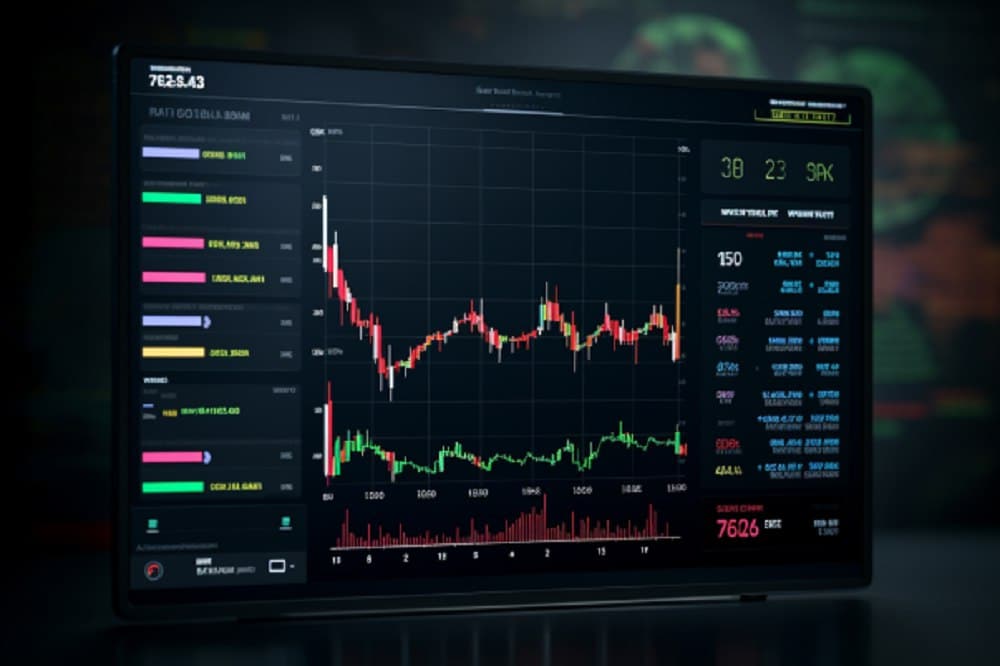Different orders exist that are used to buy or sell crypto assets. The major ones are market order and limit order. However there is another one known as stop-limit-order. A stop limit order is an order that allows you to add a trigger that initiates a limit order at a certain price.
A limit order on the other hand has a price range within which the trade is executed. You can place the order and go away for three months without worrying about it because it doesn’t get filled instantly, unlike a market order.
There are fundamental differences between the two. This guide highlights the differences between these two types of orders, and helps you to decide which one to use for your next trade.
How a Stop-Limit-Order Works
A stop-limit order is an advanced trading order that combines elements of a stop order and a limit order. To place it, you need a stop price and a limit price. Once the stop price is reached, the system automatically triggers the limit order, and then the order is executed when the limit price is reached.
For example, assuming BTC is currently at $30,000 and you want to buy it when the price starts going up, but at the same time you don’t wish to pay an exorbitant price for it. You can then open a stop-limit order.
If you expect the price to start rising fast when the price crosses above $30,100, you can then open a stop-limit order with a stop price of $30,100, and a limit price of $30,150. When the price of BTC hits $30,100, a limit order is placed to buy at $30,150.
For a sell stop-limit order, let’s say you bought BTC at $28,000 and it has now risen to $30,000. You can then use a stop-limit order to prevent losses should the price fall back to where you bought it. You therefore set your stop price at $28,500 and your limit price at $28,000.
Once the price drops to $28.500, a limit order will be triggered to sell at $28,000 should the price reach that level. That way, you won’t incur any losses.
Note that while you can set the stop price and limit price at the same level for a buy order, it is safer to make the stop price higher in a sell order since the price change can be so rapid you can incur a loss before the limit order is placed.
Difference between a limit order and a stop-limit-order
Both a limit order and a stop-limit-order allow you to set a price at which to sell your assets or to buy them. They are very useful if you’re not in a hurry to buy or sell anything, and if you wish to sell at a particular price to minimize losses or maximize gains.
However, a stop-limit-order has a stop trigger, unlike a limit order. This means that it allows you to set the minimum amount of profit you’re happy to take or the maximum amount you’re willing to risk on a trade.
For a trader, buy limit order is set below the current market price but a sell order is placed above the current market price. The limit price is the minimum amount you’re willing to accept when selling or the maximum amount you’re willing to pay when buying.
While the limit order only specifies the price at which you want to buy or sell, a stop-limit order specifies the price at which you want to trigger a trade and the price at which you want to execute it.
Conclusion
A stop-limit order is just like limit order, but it has the added element of a trigger. While it allows for customization and effective risk management, it also has execution risk, price risk, and problem with timing that can make you incur losses, so use it with caution.
At Tokenhell, we help over 5,000 crypto companies amplify their content reach—and you can join them! For inquiries, reach out to us at info@tokenhell.com. Please remember, cryptocurrencies are highly volatile assets. Always conduct thorough research before making any investment decisions. Some content on this website, including posts under Crypto Cable, Sponsored Articles, and Press Releases, is provided by guest contributors or paid sponsors. The views expressed in these posts do not necessarily represent the opinions of Tokenhell. We are not responsible for the accuracy, quality, or reliability of any third-party content, advertisements, products, or banners featured on this site. For more details, please review our full terms and conditions / disclaimer.
